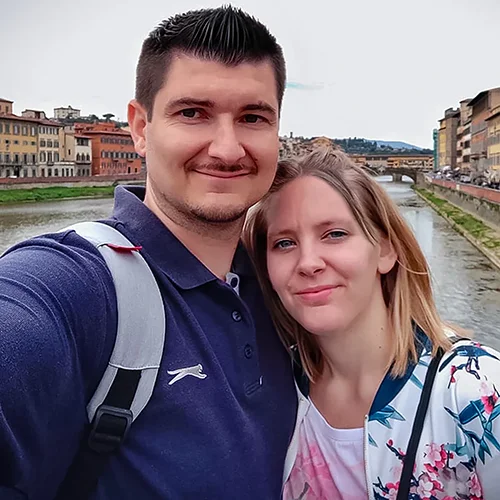Christmas in Spain vs. Germany: a comparison of traditions
Christmas in Spain vs. Germany: a comparison of traditions
Christmas in Spain vs. Germany: a comparison of traditions
Christmas in Spain vs. Germany: a comparison of traditions
6. Dezember 2024
Feedback: 0
Christmas is the festival of love, lights, and delicious treats. While Germany celebrates it in a more serene and traditional way, Spain brings it to life with vibrant, sometimes surprising traditions. Let’s take a humorous look at how these two countries celebrate the most wonderful time of the year—and why you should combine the best of both worlds for an unforgettable holiday season!
Peaceful Traditions in Germany
The Advent Season – Four Candles for Anticipation
In Germany, the Christmas season officially begins with the first Advent. Many households decorate their living rooms with an Advent wreath, lighting one more candle every Sunday. Homemade cookies, stollen, and other treats are an essential part of this tradition. And let’s not forget the Advent calendar, which sweetens the countdown to Christmas.
❗ Did you know? ❗
The first Advent calendar originated in Germany! Today, they come in all forms, from classic chocolate-filled calendars to luxurious versions featuring perfumes or spirits.
As the cold settles in outside, the warmth of home is perfect for a cozy cup of children’s punch, or for the adults, a steaming glass of spicy mulled wine.
🌸 Fun Fact 🌸
German mulled wine might cause quite a stir in Spain, where Cava, the sparkling Spanish champagne, takes center stage during the holidays. Cheers—or as the Spaniards say, ¡Salud!
Christmas Markets – A Feast for the Senses
German Christmas markets are famous worldwide, attracting locals and tourists alike. In cities like Nuremberg, Dresden, or Cologne, the air is filled with the aroma of gingerbread, bratwurst, and mulled wine, while artisanal stalls offer unique gift ideas. A visit feels like stepping into a Christmas fairytale—kitsch but undeniably magical.
From quaint village markets to the renowned Nuremberg Christkindlesmarkt, Christmas markets are the heart of Germany’s holiday season. Here, tradition meets shopping, with offerings like handcrafted wooden toys, intricate artisanal crafts, and the ever-popular chocolate apples—a sensory delight for everyone.
💡 Tip💡
If you prefer a quieter atmosphere, smaller Christmas markets in rural areas often offer an even more enchanting experience.
St. Nicholas Day: Small Gifts, Big Smiles
On December 6th, children in Germany place their boots outside their doors, hoping St. Nicholas will fill them with sweets and small gifts overnight. This tradition is a charming preview of the festive season to come.
Christmas Eve: The Big Day
For most Germans, December 24th is the most important day of Christmas. Families gather in the evening, the Christmas tree is decorated (or already beautifully prepared), and a festive meal is served. Classics like roast goose, pork roast, or even the simple yet beloved sausages with potato salad make their way onto dinner tables.
After the meal comes the gift exchange, where children finally get to unwrap their presents, usually under a beautifully lit Christmas tree, transforming the living room into a magical haven.
Epiphany: The End of the Christmas Season
n Germany, the Christmas season officially ends on January 6th, also known as Epiphany. Many children dress as the Three Wise Men and go caroling from house to house, collecting donations for charitable causes. This day provides a peaceful conclusion to the festive season.
Christmas in Spain: Full of Joy and Traditions
While Germany emphasizes serenity, Spain celebrates Christmas with a touch of fiesta. This season is filled with vibrant traditions, delicious food, and festivities that extend well into January.
Advent Wreaths vs. Calendars
In Spain, the Advent season is less about wreaths and candles and more about the Advent calendar. For children—and let’s be honest, adults too—it’s a daily highlight to open a door and reveal a small surprise.
Belénes: Artistic Nativity Scenes
Nativity scenes, or Belénes, are at the heart of Spanish Christmas decorations. These displays often go beyond the Nativity and depict entire village and daily life scenes. In cities like Seville and Barcelona, grand public nativity exhibitions attract thousands of visitors each year.
Nochebuena: The Spanish Christmas Eve
December 24th, known as Nochebuena, is a warm and communal celebration. Families gather for a grand feast that often lasts past midnight. Seafood, lamb, and regional specialties take center stage. However, gifts are not exchanged until January 6th.
Spanish Highlights: New Year’s Eve and Epiphany
New Year’s Eve: Twelve Grapes for Good Luck
On December 31st, or Nochevieja, Spaniards celebrate with vibrant festivities. At midnight, it’s tradition to eat twelve grapes, one for each chime of the clock. Successfully eating all twelve in time is said to bring good luck for the year ahead—a fun and often chaotic tradition that guarantees laughs every year.
Caga Tió: A Log Full of Surprises
One of Spain’s most unique Christmas traditions is the Caga Tió, a painted log with a red blanket, found in many Catalonian homes. Children take turns hitting the log with sticks while singing songs, „encouraging“ it to „release“ gifts. It’s unusual, yes, but that’s what makes it so charming.
🌸 Fun Fact 🌸
While German children patiently wait for the Christkind or Santa Claus to deliver their presents, Catalonian kids get to work—literally!
Epiphany: The True Highlight
While Christmas Eve is the big day in Germany, Spaniards celebrate their main event on January 6th, the Día de los Reyes Magos (Day of the Three Kings). The night before, grand parades take place in many cities, with the Three Kings distributing sweets to excited children.
🌸 Interesting Fact: 🌸
German kids write wish lists to Santa or the Christkind, while Spanish children pen their letters to the Three Kings.
How to Enjoy the Best of Both Worlds
Why choose between the two traditions when you can embrace both?
◉ German Christmas Markets:: A must for anyone who loves the festive spirit. Add a Spanish twist by gifting Turrón or Polvorones (traditional Spanish sweets).
◉ Spanish Fiestas:: Don’t miss the spectacular Three Kings Parade. And who says you can’t hand out a few sweets on January 6th in Germany too?
◉ Caga Tió Meets the Christmas Tree:: A quirky combination that’s sure to bring laughter, especially for the little ones.
Conclusion: Two Countries, Two Christmases – Double the Magic
Whether you prefer the peaceful coziness of Germany or the vibrant celebrations of Spain, Christmas is a festival that connects people all over the world. Why not combine the traditions of both countries and create a holiday you’ll never forget? With mulled wine and Turrón, roast goose and Caga Tió—your Christmas is guaranteed to be unique.
We hope these tips will help you to master your everyday life as an expat even better! Do you have your own experiences or additional tips? Then please leave us a comment! We look forward to hearing from you and accompanying you on your expat adventure. Feel free to share this post with others who could benefit from the tips and stay tuned for more insights and inspiration from life as an expat.
Your Steffi and Marius

Wir sind zwei deutsche Auswanderer und auf emigres-life nehmen wir Dich mit auf unsere Reise in ein neues Leben.
In unserem Projekt schwingt das Pendel meist in Richtung stressig oder chaotisch und weniger in Richtung tiefenentspannt.
Wenn du also wissen willst, in welches Fettnäpfchen wir als nächstes treten oder welche Hürden vor uns liegen und wie wir sie überwinden, dann bleib dran.
Nächster Blogpost
Die Bedeutung von Routine und Struktur für Hunde
Vorhergehender Blogpost
Weihnachten in Spanien vs. Deutschland – Der ultimative Traditionsvergleich


 Pin it!
Pin it!

